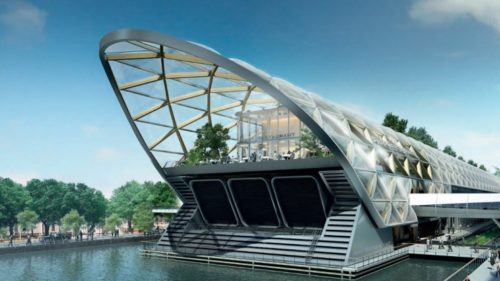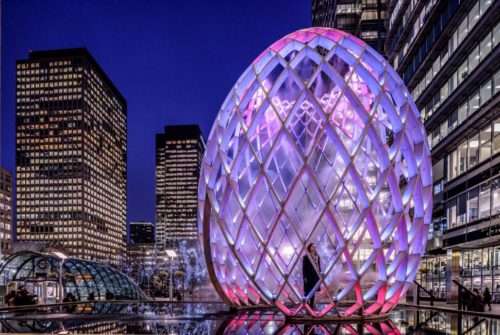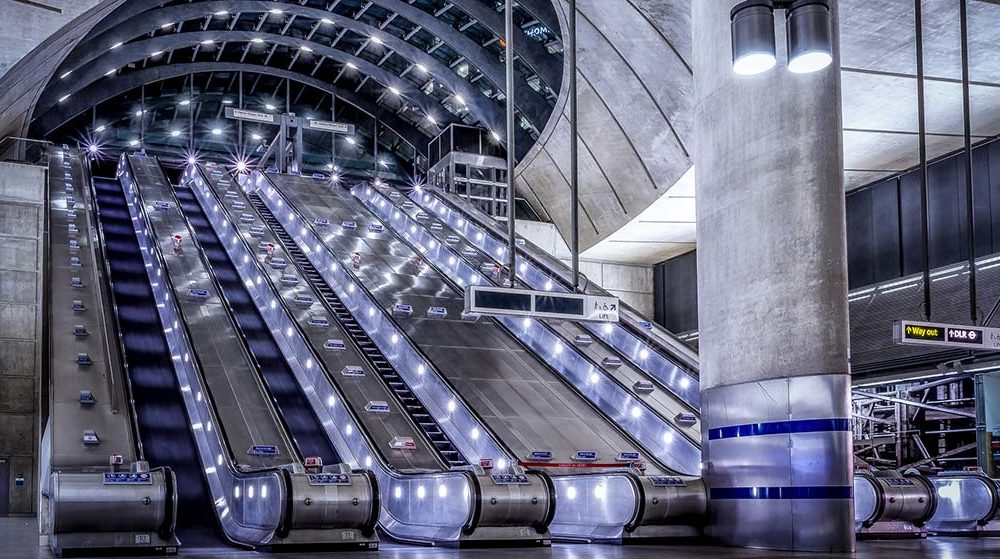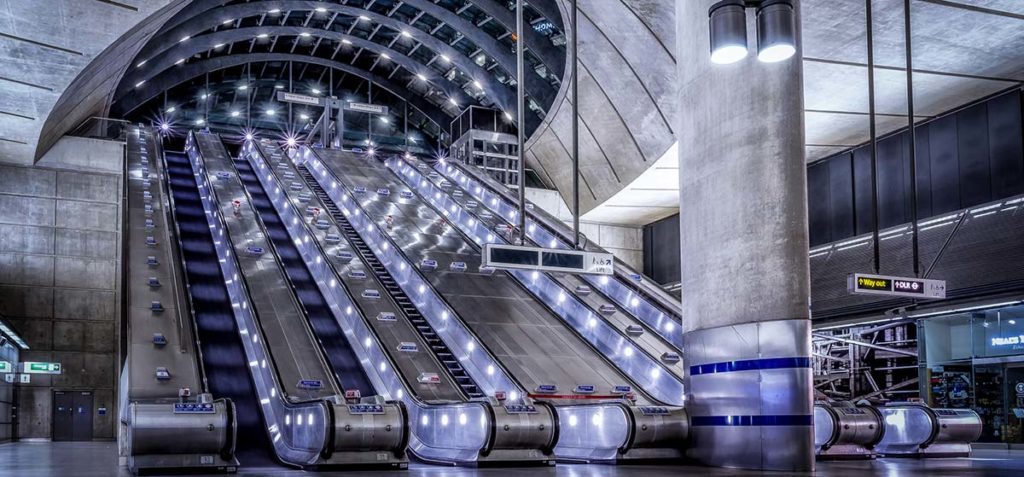While mixed-use precinct is the buzz-word of the day, the concept is not new, and some of the best examples date back three decades.
Canary Wharf is a 40-hectare estate with 140 000m2 of office, retail and leisure space, and a working population of around 120 000 people. There are 37 office buildings and five malls with in excess of 300 shops, cafés, bars and restaurants. Canary Wharf markets itself as one of the safest places to live and work in Europe, with the whole area monitored by a dedicated security team working from a centralised control room.
Canary Wharf’s real strength lies in the concentration of big businesses – particularly financial businesses – which have been lured away from the traditional financial core of “The City”. And many of those relocated workers (not all of whom are bankers) have taken advantage of the mixed-use nature of the estate, by buying or renting here, thereby reducing their daily commute to a casual riverside stroll, stopping en-route for a cappuccino to sip while watching the sunrise yoga suppers contort themselves into strange shapes on the water. And it’s not just business. London’s cultural centre of gravity has tilted towards Canary Wharf with numerous performing arts venues, galleries and a prolific public art culture, with, of course, the associated vibrant restaurant, bar and club scene, so there’s no need to leave the area even at night.
While Canary Wharf is designed as an integrated space that ‘offers it all’, it’s not an isolated ghetto of privilege. The arrival of Crossrail trains in 2018 will doublerail capacity, and cut commute times significantly. It will now take just under 40 minutes to get to Heathrow airport, and ten minutes to London City Airport.

On the active side, there are water sports options like kayaking, supping, boardsailing, sailing and, for the petrol heads, power-boating, while land-based petrol-adrenalin junkies can satisfy their need for speed on London’s fastest go-kart track. On a more sedate level, one of the legacies of the Olympic Games is extensive stabling, so keen and beginner horse riders are well catered for. And – great news for anyone who is a member of Virgin Active Silo or Melrose Arch – the Virgin Active Canary Riverside Health Club, with its stunning views down the River Thames, offers reciprocity for Virgin Active Collection members.
So it’s not surprising that the bright young things in finance are moving here in their droves, but they are not alone. Canary Wharf is equally attractive to young families, not-so-young families, students, expats and even empty-nesters. While most of the residents have bought their homes, there is also a significant rental market, so the potential for investment is great.
Buildings however, are only part of a community, and this one is one of the greenest in London. About 20% of Canary Wharf has been landscaped with parks, fountains, tree-lined plazas and walkways. The extensive areas of green open space, with more than 1000 trees and significant seasonal plantings, are well integrated into the built environment, and some of the greened areas are covered to allow visitors and residents to stroll in the ‘gardens’ even in foul British winter weather. One place that is not to be missed is the Crossrail Place Roof Garden, a 300-square-metre enclosed garden that beautifully represents Canary Wharf’s heritage through the use of plants. Sited very close to the Prime Meridian, the garden is arranged as a microcosm of the world, with Asian plants to the east, North, Central and South American plants to the west, and – of course – lots of fynbos and other African plants to the south. Many of these plants, such as sugar, spices, tea, coffee, cocoa, hemp, cotton and rubber, would have formed the bulk of the imports unloaded at these very docks 200 years ago. And that brings us to the history of this site – the rise and fall of the Isle of Dogs.
The Isle of Dogs and the London Docklands were once one of the busiest parts of the city, as they handled the shipping that launched Britain as a global imperial power – the trading in sugar, steel, slaves, opium, tea, spices, ceramics, gold, diamonds, silks, cottons, and British wool. But by the 1970s, the world had changed. Britannia no longer ruled the waves, and the cargo vessels of yore had been replaced by unromantic but efficient container vessels and bulk tankers that needed deeper access and bigger docks. By the 1980s, almost all the shipping business had moved, industries followed, and large-scale unemployment, urban decay and crime filled the gap.
Despite remaining derelict, the land was extremely valuable, and was owned by many different companies who were reluctant to either sell or gentrify. This was until, in 1987, Canadian company Olympia & York, under the auspices of Paul Reichmann, took over the mammoth task of instilling life and money in the area.
In 1988, construction began on One Canada Square, which is now the second tallest building in England. This iconic skyscraper rapidly became a magnet for commercial business looking to expand out of the city centre, and Barclays Bank moved its entire staff complement of 7000 to a new 93 000-square-metre tower on the estate. Today, the 33-storey Barclays building sits very well on the site, in the middle of the dock and surrounded by water on two sides and five large atria on the south elevation.

“Barclays had been in the City of London for close on 300 years, so the move to Canary Wharf was a brave leap, but a highly successful one,” says Brian Teale, of Barclays Bank. “Canary Wharf was selected for economic and operational benefits, enabling the bank to consolidate its entire London operations in one single location,” he explains. Summing up, he concludes “Canary Wharf is a great place to work. It’s safe, clean and exciting, with great facilities, restaurants, bars and shopping – and all on the water. It has excellent communication links, and 100 000 people go there every day. It is a second financial district supporting the City of London.”
Canary Wharf is more than just a great place to live, work and relax. A key success of the development is its ability to increase workforce productivity and keep retention rates high. When Clifford Chance, the world’s largest law firm, moved its offices out of the city of London and into Canary Wharf in 2003, it anticipated losing a significant number of its employees in the move, so it needed to find a way to convince current employees to make the move with it.
As a result, their new office incorporates a 24/7 coffee shop, a full cafeteria that also serves as a large meeting room, a sky-lit swimming pool on the eighth floor with views of the docks and a full-time gym with trainers, a travel agency, a bank and a hairdresser. This provides a high-performance work environment that benefits both employees and clients, who don’t need to worry about finding time to deal with personal matters and errands. The result is that Clifford Chance lost less than three percent of its workforce, with most employees deciding it was well worth the longer commute. And, of course, some will have made the decision to capitalise on the corporate move by moving to – and buying homes in – Canary Wharf.
Canary Wharf is a real success story, turning a once neglected area of land into 40ha of London’s – and the world’s – most sought after office and retail space. But what’s really heartening is its mirror image right here in Cape Town. Facing similar socio-economic challenges, and starting at very much the same time, Cape Town’s derelict, and somewhat dodgy, docklands has also – over the last three decades – been transformed into a fabulous mixed-use precinct of retail, business, entertainment and residential property – the V&A Waterfront. Both spectacularly successful enterprises exceed expectations in so many ways and have become world leaders in showing how all aspects of one’s life can work together seamlessly.
Source: Estate Living


